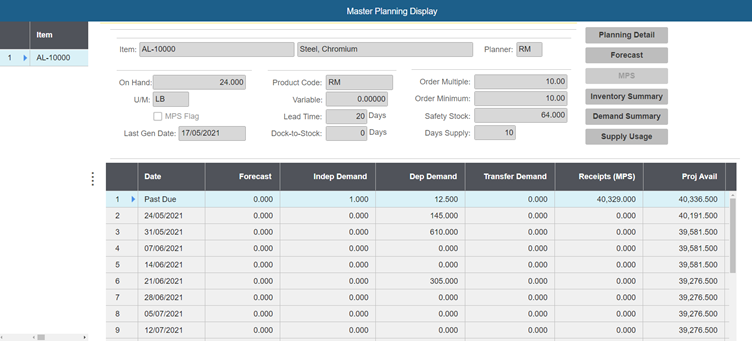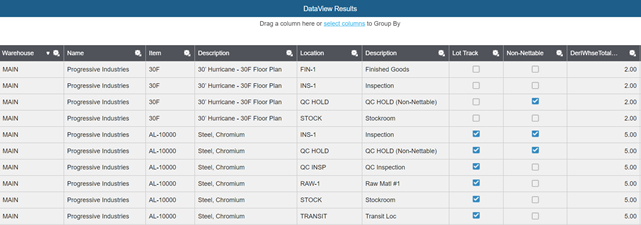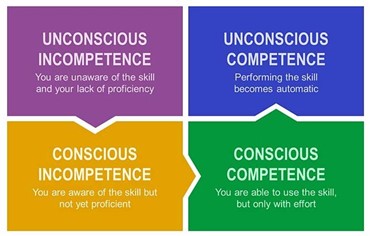This month, our SyteLine Lead Consultant Matthew Norris looks at the best ways to wean planners off their spreadsheets.
Yes, spreadsheets can be an addiction, but for a good reason!
Spreadsheets are prevalent in all modern businesses for the simple reason that they provide a quick, easy, flexible – and cheap way to analyse and model data.
Traditionally, it is the finance department that are the heaviest investors in spreadsheets, but ERP planners are no different to any other breed.
The familiarity of the spreadsheet is often a comfort blanket for everyone involved. In the typical daily/weekly company Sales Inventory Operations Planning (SIOP) meeting, planners from manufacturing and logistics departments will habitually pore over the latest version of their spreadsheet showing signals in demand and supply.
So, what is wrong with using a spreadsheet?
Using a spreadsheet for this often challenging activity has several drawbacks, some of which may not be immediately obvious to those involved (old habits die hard!).
The first 30 minutes to an hour in such meetings are often spent establishing who has the most up to date copy of the spreadsheet; whose laptop is the fastest and therefore should open it (opening times can vary from a few seconds to a few minutes depending on the complexity of formulae and the amount of data); a quick reminder on what all the multitude of columns and colours mean; an update on who has made changes to the spreadsheet since the last meeting, when and why!
Once the Planning activity eventually begins, it normally involves the time-phased netting of supply versus demand involving Customer Orders, Job Orders and Purchase Orders and results in a projected weekly/monthly stock level for the next year or so.
After various telephone calls, discussions, review, and a bit of guesswork, any changes to the spreadsheet are done on the hoof and then copied into the ERP system at some time in the not-too-distant future. This creates the potential of transposition errors as well as delays in feeding signals back to the rest of the business.
If there is no ERP system in use, there is the danger that everyone’s version of the truth is different, and confusion can easily set in.
So, in summary, spreadsheets are often out of date, out of sync – and tend to consume inordinate amounts of employee time to maintain.
What’s the alternative then?
Thankfully most modern ERP systems such as Infor SyteLine include a suite of planning tools to show the same information from within the system. An example of one such tool is shown below:
Transforming your business to use ERP is not as painful as you might think if the right approach is taken, and an experienced hand is there to guide you.

So how do we get there?
Education is the key to transforming your business processes. You are never going to completely rid your company of all spreadsheets, but if users can see the benefits of change, they may well become your champions as they begin to develop a vested interest.
So, a good starting point is organising some sessions where an alternative ERP process is identified, presented, and then compared with the current process to illustrate how much quicker and efficient planning can be.
Also, preaching on the dangers of the over-use of spreadsheets is helpful. The main cost of planning incorrectly is the inability to deliver to customers on time and in full which can ‘make or break’ a business in a competitive marketplace. Other costs around inefficiency also have an impact on the bottom line and can have a direct effect on headcount.
Training is another key area to focus on. Employees will need to be trained on how to use any new planning tools and how to get the most out of them. More specifically, they may need to learn a completely new way of doing things as the process flow in a new ERP system may be designed differently. They are also going to need to understand to appreciate that the data they are looking at is no longer ‘my data’ in ‘my spreadsheet’ but instead is company data in a system in which everyone has a stake and a part to play.
Fortunately, many planning and reporting tools are designed to make this transition as easy as possible. Some of them have user interfaces and (some) commands which are nearly identical to common spreadsheets (read: Excel). This eases the changeover and increases the users’ comfort level. A good example of this in Syteline are ‘DataViews’.

Finally, do not expect things to change overnight. It is interesting to consider how people learn and their different stages of awareness. People are often on auto-pilot and unaware of the inefficiency or risks of a process they perform daily. Helping them to understand this and gradually taking them through a new and improved process will eventually get them to the finishing line.

The Conscious Competence Learning Model
Overall, a combination of education and gentle persuasion from a consultant who is also good at selling the future vision should get your employees raring to go and ready to transform your business for the better!
If you have any questions or would like to know more, please feel free to contact us.

